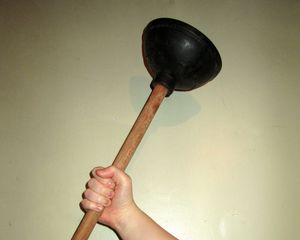If asked to define ‘who’ you are, what would you say? What would your foremost response be? Whether directly or indirectly, we define ourselves by our gender and our gender is the road map that determines so many aspects of our lives. In fact, your gender will establish your characteristics, and how you will be expected to operate in society. Have we evolved and adapted to gender roles based on characteristics that assisted in the survival of our ancestors, or have male and female characteristics been so biologically dissimilar that we have learned to appreciate these differences? Are gender roles inherent or an illusion?
Gender Role: Nature vs. Nurture
What are Gender Roles and how are they Formed?
Gender is the greatest separation of the species; an apparently clear divide that has prompted countless studies in search of biological and physiological differentiation between the sexes. According to the World Health Organization a gender role is a shaped, structured set of attributes that is culturally acceptable and separate amongst women and men. Could this be the reason for differentiation in gender roles? Are our roles actually molded from the cultural traits and characteristics of ‘men’ and ‘women’ that our societies shaped us to possess? In short, are gender roles determined by innate biological differences, unchanged and under no power of society, or have our cultural influences actually molded and established our roles?
Gender Roles: A Strategy to Evolve?
According to research conducted by Neurophysiologist Renato Sabbatini, civilization has played a major role in the development of our male and female gender roles and characteristics. Sabbatini discusses the hunter and gatherer roles of our ancestors, and believes that the traits necessary to survive then were successful traits that divided men and women by utilizing separate survival characteristics and techniques. These male and female survival tactics flourished, and therefore evolved and sharpened the roles that are innately in our possession today.
To illustrate the evolution of these traits, picture our women ancestors as nurturers and gathers who stayed near their dwellings to care for children and collect vegetation for their clans. The communication, rearing abilities, and problem solving skills needed for survival within women sharpened, and carried on through the generations. On the other hand, men were gathers and needed fine tuned navigation sense and bodily strength to hunt and survive. In turn, these characteristics sharpened in men as part of their evolutionary survival (Sabbatini, 2007).
Biological Differences and Gender Roles
Sabbatini further cites research that provides various physiological differences of the male and female brains. Science and research have proved that areas of the brain such as the cerebral cortex, frontal and temporal lobes, and the hypothalamus have distinct differences amongst the sexes that are shown in various aspects of our actions. These differences include: our thought process, verbal expression, and problem solving abilities (Sabbatini, 2007).
Supplementary to this research, studies have shown that our hormones determine many of our gender identity and role characteristics. In fact, Sabbatini writes that hormones have the greatest influence on our identities, roles, and characteristic, and that we will identify with the characteristics of the gender in which we have the most hormonal influence. Therefore, if given male hormones, a female will perform male characteristics, while a male, if given female hormones, will perform female characteristics.
Gender: Biology or Illusion?
As Sabbatini has stated, research proves that the manipulation of hormones has a drastically influential effect on the characteristics of men and women alike. In fact, such conditions as Turner syndrome, Klinefelter syndrome, and Hermaphroditism are the result of severe hormone imbalances and, in result, have a major affect on the gender identity and role of an individual (Emedicine, 2008). Have our hormones evolved to become influenced by cultural expectations of gender role, or have gender roles been influenced by hormones.
Some positions on the matter state that culture maintains a common prejudice of gender ambiguity, and that we have been forced to conform to match the appropriate behaviors that coordinate to our external genitalia (Emedicine, 2008). This argument supports the evolutionary theory that we are the product of our hunter / gatherer ancestors who assigned duties based on their gender, and thus evolved with a sharpened sense of what we now define as male and female gender roles. Conclusion
Our ancestors were required to adapt to their environment to survive. Those that survived to reproduce and contribute to the evolution of the population today did so due to their ability to understand characteristics that were best suited for the survival of their male and female populations. As a result, women are now innately nurturers, communicators, and problem solvers, and men have a better sense of navigation, and have acquired greater body strength. Also, these male and female characteristics can even be linked to our hormones; as studies show that male hormones have a masculine effect on a female’s characteristics and visa versa. Therefore, the theory of evolution, which suggests that our dissimilar male and female characteristics ascended from our hunter and gatherer ancestors, seems to be the most logical and satisfactory opinion of our gender role assignment and origination. References
Emedicine.com: Sexuality: Gender Identity. (2008). Retrieved May 22, 2008 from http://www.emedicine.com/ped/TOPIC2789.HTM
Sabbatini, Renato, M.E. (1997). Are There Differences between the Brains of Males and Females? Abstract retrieved May 23, 2008 from http://www.cerebromente.org.br/n11/mente/eisntein/cerebro-homens.html
World Health Organization. (2008). Gender. Retrieved May 25, 2008 from http://www.who.int/topics/gender/en/



